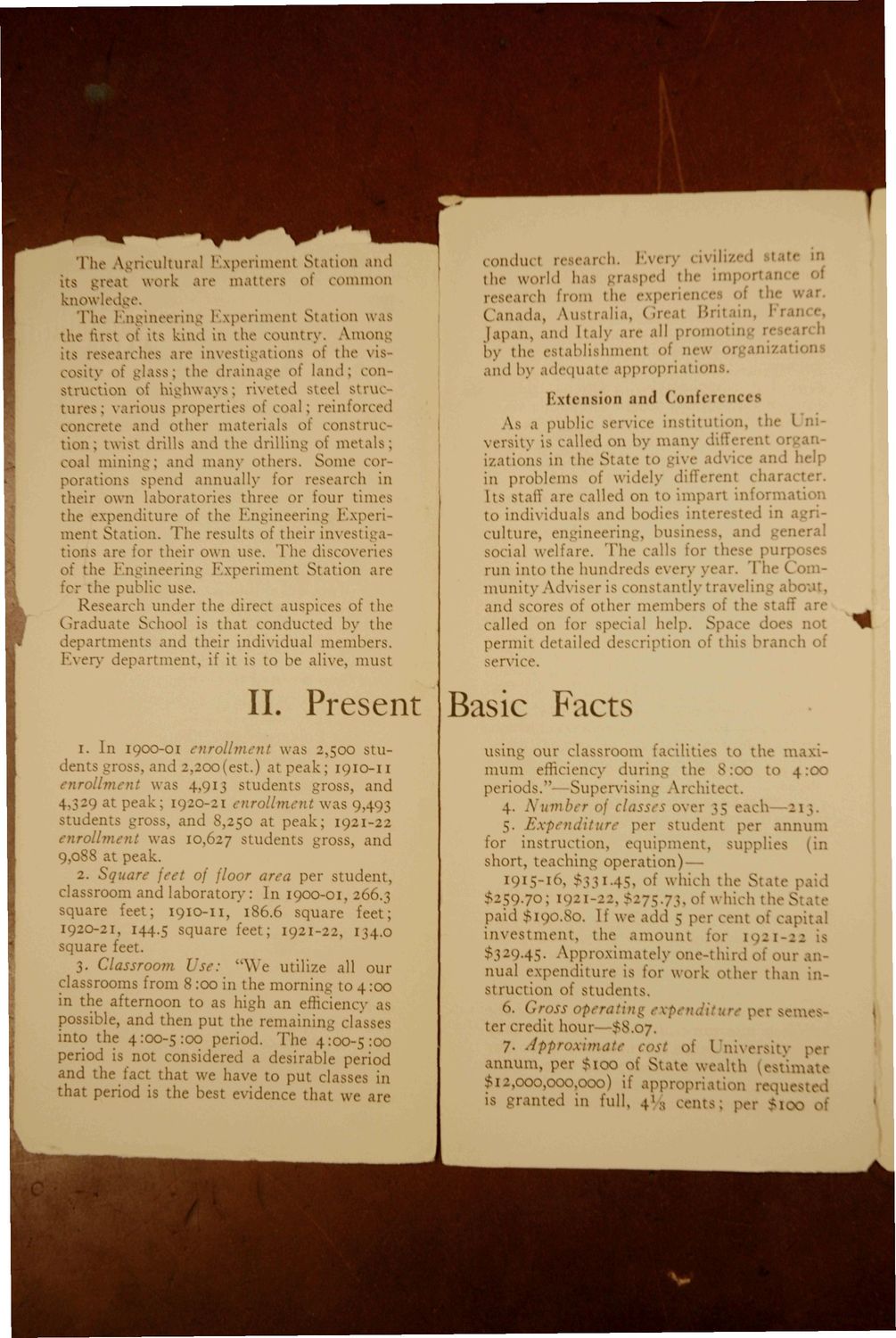| |
| |
Caption: Booklet - Basic UI Facts (1923)
This is a reduced-resolution page image for fast online browsing.

EXTRACTED TEXT FROM PAGE:
The Agricultural Kperiment Station and its great work arc matters of common knowle< . The Engineering Experiment Station was the first o its kind in the country. Among its researches are investigations oi the viscosity of glass: the drainage oi land; eonstruction oi highways; riveted steel structures; various properties of coal; reinforced oncrete and other materials oi const ruction; twist drills and the drilling oi metals; coal mining; and many others. Some corporations spend annually for research in their own laboratories three or tour times the expenditure of the Engineering Experiment Station. The results oi their investigations are for their own use. The discoveries oi the Engineering Experiment Station are the public use. Research under the direct auspices of the Graduate School is that conducted by the departments and their individual members. Every department, if it is to be alive, must onducl resean h. Every «ivili2 the world has grasped tin imports research from the exp en< 1 > tl f • •• Canada, Australia, (Ireat Brii Japan, and Italy arc all promotii by the establishment of new « And by adequate appropriation I Extension and Conferences As a public service institui >n, the I versity is called on by many different nizations in the State to give advi I hel| in problems of widely different char Its stall' are called on to impart informati< to individuals and bodies inter :i . ulture, engineerii . busim ra! social welfare. The calls for th< • purpc run into the hundreds every year. 1 1 nmunity Adviser is constantly travelii and scores of other membe :' th an ailed on for special help. Space does n permit detailed description oi this branch service. II. Present Basic Facts i. In 1900-01 enrollment was 2,500 student^ ross. and 2.200(est.) at peak; i g i o - u enrollment was 4,913 students gross, and 4..;29 at peak; 1920-21 enrollment was 9,493 students gross, and 8,250 at peak; 1021-22 enrollment was 10,627 students gross, and 9,088 at peak. 2. Square feet of floor area per student, classroom and laboratory : In 1900-01, 266.3 square feet; 1910-n, 186.6 square feet; 1920-21, 144.5 square feet; 1921-22, 134.0 square feet. 3. Classroom Use: "We utilize all our classrooms from 8 :oo in the morning to 4 ;oo in the afternoon to as high an efficiency as possible, and then put the remaining classes into the 4:00-5 ;oo period. The 4:00-5:00 period is not considered a desirable period and the fact that we have to put classes in that period is the best evidence that we are using our classroom facilities to the maximum efficiency during the s :oo to 4:00 periods." Supervising Architect. 4. Number of classes over 35 each 21 ;. 5. Expenditure per student per nnum for instruction, equipment, supplies (in short, teaching operation) — 1915-16, $33*45, of which the State p d $259.70; 1921-22, $275.73, of which the S a paid 5 H ) 0 . 8 O . If we add 5 per cent of capital investment, the amount r 10:1-22 i $329.45. Approximately one-third ur nual expenditure is for work other than in st met ion oi students. 6. Gross oper, v.v.\ per s tercredit hour—5S.07. 7. Approximate t oi Univ« dty p annum, per <ioo of State wealth (estU $12,000,000,000) if app l . ]Uest is j tnted in full, 4I/3 vents; y
| |